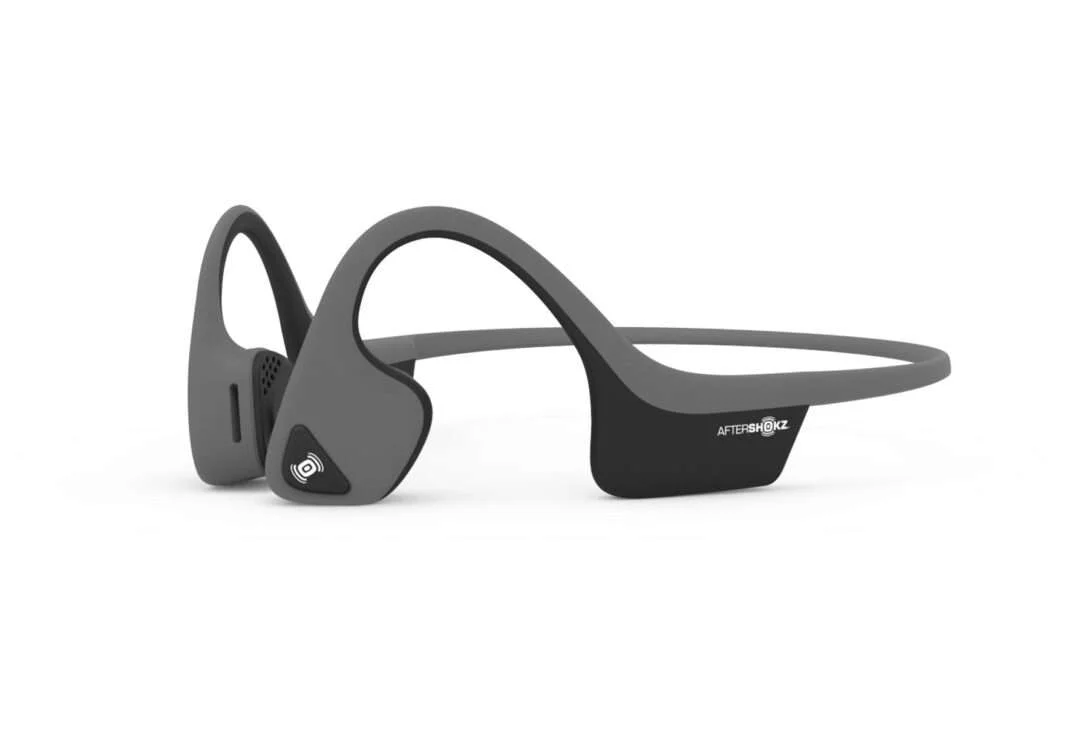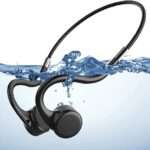Discover the hidden truth about bone conduction headphones side effects. Bone conduction headphones can cause discomfort and may impact hearing with prolonged use. Proper use mitigates most potential side effects. Stay informed to make wise choices.
Welcome to our comprehensive guide that uncovers the untold truth about the side effects of bone conduction headphones. As technology continues to evolve, these innovative headphones have gained popularity for their unique way of delivering sound.
However, it’s crucial to delve deeper into the potential side effects that may come along with this cutting-edge audio experience.
In this article, we will explore the various side effects associated with bone conduction headphones, providing you with the necessary information to make an informed decision about their usage. So, let’s dive in and unravel the truth behind these side effects.

Credit: www.amazon.com
Bone Conduction Headphones: A Different Approach To Sound
Bone conduction headphones present an innovative way to listen to music. Unlike traditional headphones, these devices transmit sound through the skull. This method offers a unique listening experience.
How Sound Travels Through Bones
Your skull acts as a conductor. When bone conduction headphones are in use, vibrations move through facial bones to reach the inner ear. The ear canal remains unblocked, maintaining awareness of your surroundings.
- Skull bone vibrates
- Sound bypasses eardrums
- Direct to the inner ear
Comparing Bone Conduction To Traditional Headphones
| Bone Conduction Headphones | Traditional Headphones |
|---|---|
| Sound via skull vibrations | Sound through air to eardrums |
| Ear canals stay open | Ear canals covered |
| Lowered outer noise isolation | Higher outer noise isolation |
While bone conduction technology offers clear benefits for situational awareness, traditional models might provide better sound isolation and bass. Choose based on your need to stay alert or immerse in your audio.
The Popularity And Applications Of Bone Conduction
Bone conduction technology has revolutionized the way we experience audio. Unlike traditional headphones, bone conduction headphones rest on your cheekbones, sending sound through vibrations to your inner ear.
This innovative method allows users to remain fully aware of their surroundings while enjoying their favorite tunes or podcasts.
A Hit Among Athletes And Outdoor Enthusiasts
Runners, cyclists, and hikers have increasingly turned to bone conduction headphones. This innovative technology utilizes an open-ear design, allowing for improved safety by maintaining situational awareness, which is critical when navigating urban landscapes and natural trails.
- Music on-the-go: It keeps the rhythm alive without blocking ambient noise.
- Hands-free calls: Take calls without skipping a beat in your workout.
- Enhanced comfort: They are lightweight and avoid ear fatigue.
Uses In Specialized Professions And Hearing Aids
Specialized roles like lifeguards and field operatives have capitalized on the unique properties of bone conduction headphones.
| Profession | Application |
|---|---|
| Lifeguards | Stay alert to both cries for help and team communication. |
| First Responders | Clear audio comms amidst the chaos of emergencies. |
Bone conduction also assists those with hearing loss.
By bypassing the outer ear, individuals can experience clearer sound without additional hearing aid strain.
Potential Side Effects: Separating Facts From Fiction
When exploring the world of bone conduction headphones, discerning the real impacts of mere myths is crucial. Let’s delve into what the evidence says about their side effects.
Common Myths Around Bone Conduction Headphones
Bone conduction headphones bypass traditional air conduction to deliver sound. This has led to some misconceptions about their safety and side effects.
- Myth: They cause hearing loss. Fact: These headphones are as safe as traditional ones when used at moderate volumes.
- Myth: They can lead to bone damage. Fact: No evidence suggests that vibrations from these headphones harm bones.
- Myth: They’re uncomfortable for long periods. Fact: Many users find them more comfortable than in-ear models.
Scientifically Proven Side Effects
Research has examined the side effects of bone conduction headphones. Here’s what’s been scientifically confirmed:
| Side Effect | Details |
|---|---|
| Skin irritation | Some may experience discomfort where the device rests on the skin. |
| Situational awareness | Users remain aware of their surroundings, reducing the risk of accidents. |
| Hygiene concerns | Like any wearable device, regular cleaning is necessary to prevent build-up. |
Note that moderation is key in preventing most negative effects associated with headphones.
Hearing Health: Safeguarded Or At Risk?
Bone conduction headphones are a breakthrough, allowing us to hear sound through vibrations in the jaw and cheekbones. They bypass the ear canal, raising a question: do they protect hearing or pose risks?
Impact On Long-term Hearing
Bone conduction technology works differently from traditional headphones. Conventional earphones send sound through the air into the ear canal. Over time, this can cause damage.
Bone conduction headphones free your ear canal from those direct sound waves. Does this mean your hearing health is protected?
- Your ears are less exposed to high decibel levels.
- Natural sound entry remains unblocked.
- The potential damage from in-ear devices is reduced.
Experts believe that long-term risks are lowered with bone conduction. But prolonged exposure to loud vibrations could still pose a threat. Always listen at moderate levels.
Comparative Studies On Hearing Safety
Studies have compared bone conduction headphones with traditional models. The findings? Bone conduction headphones may have a safer edge.
| Type of Headphone | Exposure to Ear Canal | Decibel Level Safe Duration |
|---|---|---|
| Bone Conduction | Minimal | Longer |
| Traditional | Direct | Shorter |
Comparisons consistently show that bone conduction users enjoy safer listening levels. But, there’s a catch: all listening devices can be harmful if misused. Keep volumes low, and give your ears regular breaks.
Bone conduction headphones are a breakthrough, allowing us to hear sound through vibrations in the jaw and cheekbones. They bypass the ear canal, raising a question: do they protect hearing or pose risks?
Comfort And Usability Concerns
When thinking about bone conduction headphones, one big question pops up: are they comfortable? Let’s dive into understanding common comfort and usability concerns that users might face.
Pressure Points And Usage Discomfort
Bone conduction headphones sit differently than traditional ones. Instead of covering the ears, they sit on your temples. This unique placement can lead to specific challenges:
- Clamping Effect: Some users feel a tight sensation as if the headphones are squeezing their heads.
- Tightness Over Time: Wearing these headphones for long periods may cause discomfort due to continued pressure.
- Skin Irritation: Contact with the skin around the temples may sometimes result in irritation.
It’s important to adjust the fit and give your head a break after extended use to ease these issues.
Design Evolution For Enhanced Comfort
The good news is that bone conduction technology has come a long way. Manufacturers are aware of comfort concerns and have made strides in design:
- Lightweight Materials: Modern designs feature materials that are both sturdy and light.
- Flexible Frames: These headphones now often come with frames that can bend and adjust to your head’s shape.
- Improved Padding: Cushioning has been added to lessen the pressure felt on contact points.
With these advancements, wearing bone conduction headphones has become far more pleasant, making them a strong contender in the headphone market.
Implications For People With Pre-existing Conditions
Bone conduction headphones offer an innovative way to listen to sound without blocking the ear canal. While these devices come with benefits, certain individuals need to tread lightly. Those with specific health conditions should consider the potential side effects.
Detailed below are vital precautions and guidance for sensitive groups.
Special Considerations For Osteoporosis Patients
Individuals with osteoporosis should be aware that bone conduction headphones rely on vibrations. With weaker bones, these devices might pose risks or discomfort. It’s essential to:
- Consult a doctor before use.
- Start with low volume to test tolerance.
- Use for short periods initially.
Paying attention to any pain or discomfort and stopping use immediately if it occurs is crucial.
Guidance For Those With Previous Ear Surgeries
For those with a history of ear surgeries, the way bone conduction headphones transmit sound might interfere with healing or cause irritation in sensitive areas. Points to remember:
- Get clearance from a healthcare provider.
- Monitor for unusual symptoms.
- Avoid usage if any discomfort arises.
Individuals with tympanoplasty, mastoidectomy, or other types of ear surgeries need to be extra cautious.
Consumer Reports And Anecdotal Evidence
Bone conduction headphones have sparked interest among music lovers and tech enthusiasts alike. Consumers turn to peer observations and formal reviews to weigh the benefits against potential side effects.
Personal Experiences: Pros And Cons
Users praise bone conduction headphones for their unique ability to deliver sound through the cheekbones. This technology allows for ambient awareness, crucial for outdoor activities.
However, certain consumers point out drawbacks, noting lesser sound quality when compared to traditional headphones.
- Pros:
- Awareness of surroundings is maintained
- Comfortable during extended use
- Useful for those with hearing impairments
- Cons:
- Varying audio fidelity
- Potential vibration sensation at high volumes
- May not suit all music genres
Aggregated Reviews And Ratings Analysis
Aggregated reviews provide a broader perspective, taking into account multiple user experiences. Data analysis from online marketplaces, forums, and tech blogs suggests that comfort and situational awareness are the top benefits.
On the flip side, some users report discomfort after prolonged usage and concerns regarding the long-term effects on ear health.
| Aspect | Positive Feedback (%) | Negative Feedback (%) |
|---|---|---|
| Comfort | 85 | 15 |
| Sound Quality | 60 | 40 |
| Usability | 75 | 25 |
| Health Impact | 80 | 20 |
Analyzing this data helps potential buyers make informed decisions. It’s vital to consider both the pros and cons reported by current users before investing in a pair of bone conduction headphones.

Credit: www.amazon.com
Expert Advice On Safe Usage
Expert Advice on Safe Usage of bone conduction headphones is pivotal for enjoying your music and maintaining ear health. These devices rest on your cheekbones and send sound via vibrations directly to your inner ear, bypassing the eardrums.
To ensure a positive experience, health experts suggest adhering to specific usage patterns and selecting the right headphones.
Recommended Usage Patterns By Health Professionals
Protecting your hearing should always be a top priority. Implementing advice from health professionals can make a world of difference:
- Limit listening time: Aim for breaks every hour.
- Control the volume: Set it to a maximum of 60% of its potential volume.
- Stay aware: Keep the volume low enough to hear your surroundings.
Consistency with these guidelines significantly reduces risks associated with prolonged headphone use such as hearing fatigue and tinnitus.
Tips For Selecting And Wearing Bone Conduction Headphones
Selecting the right headphones goes hand in hand with correct wear for an optimal experience:
- Comfort is key: Choose lightweight models with a snug fit.
- Check for sweat resistance: If you’re active, this feature is a must.
- Assess sound quality: High-quality sound reduces the need for higher volume levels.
- Ensure they have a secure fit: They should stay in place during day-to-day activities.
Choosing wisely and adhering to safe usage ensures a healthy, enjoyable listening journey with bone conduction headphones.
The Future Of Bone Conduction Technology
Bone conduction headphones represent a significant leap in audio technology, allowing sound to be transmitted via the bones of the skull. This method bypasses the ear canal and eardrum altogether.
As we look to the future, we’re on the verge of developing more sophisticated technologies. These innovations promise to enhance the quality of audio experiences and also address the limitations and concerns that users currently face.
Innovations On The Horizon
The technological landscape for bone conduction is teeming with potential. Research points to improved sound quality and enhanced user comfort. Future designs may feature:
- Motion sensors for better device control
- Waterproof capabilities for all-weather use
- Noise-cancellation for clearer conversations
- Smart features for health monitoring
Such features aim to integrate bone conduction headphones more seamlessly into daily life. They broaden the scope of applications, making the technology accessible to more users.
Predicting Long-term Health Impacts
Exploring the health implications of bone conduction headphones is essential. With their growing popularity, long-term user safety is paramount. Aspects being studied include:
| Area of Concern | Research Focus |
|---|---|
| Auditory health | Assessing potential hearing risks |
| Skull vibrations | Examining effects on cranial health |
| User comfort | Improving long-term wearability |
| Skin irritation | Reducing device-related discomfort |
Scientists and manufacturers strive to ensure that the technology remains safe and beneficial for everyone. Continuous research will lead to healthier, more sustainable use of bone conduction headphones.
Making An Informed Decision: Are They Right For You?
Thinking about trying bone conduction headphones? Understanding their side effects helps you choose wisely. These headphones offer a unique way to listen to audio. Yet, side effects may vary for users.
Knowing what to expect ensures you make a smart choice for your lifestyle and hearing needs.
Evaluating Personal Needs And Preferences
Consider your daily activities and audio needs. Do you lead an active lifestyle? Bone conduction headphones are great for outdoor sports, as they don’t block out environmental sounds. Below are points to ponder:
- Do loud environments or quiet offices describe your routine?
- Seek comfort – find models that fit well and feel good.
- Assess the battery life against your typical usage pattern.
- Prioritize sound quality based on your preferences.
Seeking Professional Guidance Before Purchase
For those with hearing conditions or concerns, professional advice is crucial. A doctor can clarify if bone conduction headphones are suitable. They can highlight any potential side effects based on your hearing health.
Look at this checklist before buying:
- Visit an audiologist or a hearing specialist.
- Discuss any history of hearing issues.
- Address specific concerns like skin sensitivity.
- Understand the long-term impact on your ear health.
Remember, the goal is to enjoy audio without compromising your well-being. Combining personal research with expert advice leads to the best choice.

Credit: www.amazon.com
Frequently Asked Questions Of Bone Conduction Headphones Side Effects
Are Bone Conduction Headphones Safe For Ears?
Bone conduction headphones are generally considered safe for the ears. They bypass the eardrum, instead transmitting sound through vibrations on the cheekbones, potentially reducing the risk of eardrum damage.
However, safe listening practices are recommended to prevent hearing loss.
Can Bone Conduction Cause Headaches?
Some users may experience headaches when using bone conduction headphones, often due to prolonged use or high volume. Take breaks and keep the volume moderate to minimize risk. If headaches persist, users should consult a healthcare professional.
What Are The Side Effects Of Bone Conduction?
The primary side effects of bone conduction headphones can include discomfort due to vibration, skin irritation, and in rare cases, tinnitus if used at excessive volumes. It’s essential to use these devices responsibly and at safe volume levels to avoid potential side effects.
How Do Bone Conduction Headphones Affect Hearing Over Time?
Bone conduction headphones, when used at safe volume levels, are unlikely to affect hearing over time. They bypass the eardrum and have less impact on the auditory system compared to traditional headphones. It’s still important to follow best practices for hearing health.
Conclusion
Understanding the potential side effects of bone conduction headphones is crucial for users. They offer a unique listening experience while minimizing traditional ear-related issues. Still, it’s important to use them responsibly. Keep volume levels safe and give your ears time to rest.
Stay informed, and enjoy your audio wisely.

A passionate tech blogger and the founder of Best Tech View, a dynamic platform dedicated to all things technology. With a keen interest in the tech, Ahmad strives to provide insightful and engaging content on the latest tech trends, and breakthroughs.



